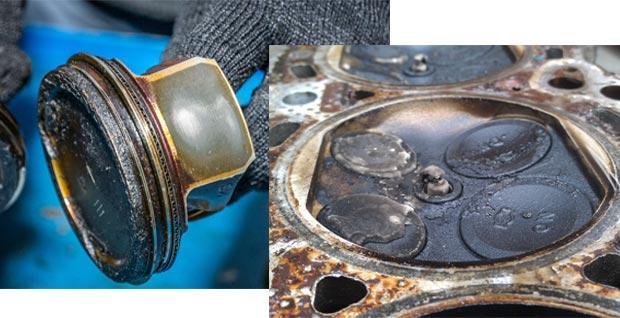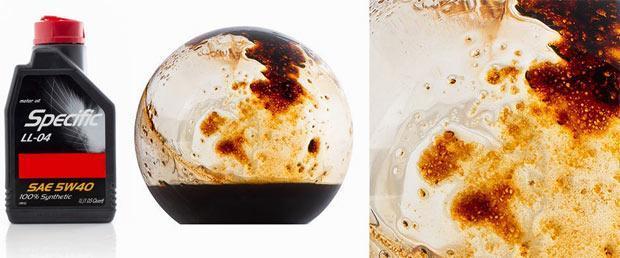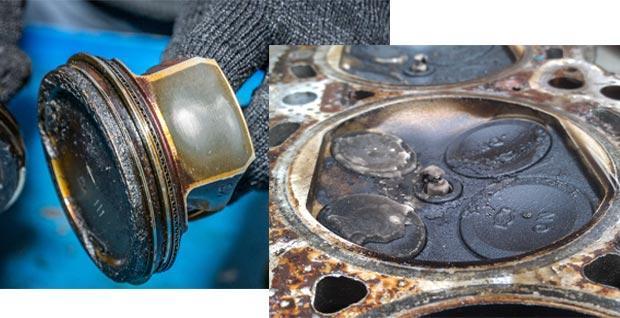
Sulphated ash content of oil. What does this setting affect?
Content
The concept of sulfate ash content and the gradation of oils according to this parameter
Sulphated ash is the percentage of the total mass of the lubricant of various solid organic and inorganic compounds formed after oil is burned. It is this parameter that is most often taken into account today, although there are other types of ash content considered in the study of lubricants.
Sulfate is, by definition, a salt of sulfuric acid, a chemical compound that has in its composition the anion -SO4. This part of the name comes from the method of counting ash in motor oil.
The grease tested for ash content is burned under laboratory conditions at high temperatures (about 775 ° C) until a solid homogeneous mass is formed, and then treated with sulfuric acid. The resulting multicomponent substance is again calcined until its mass ceases to decrease. This residue will be the ash that is incombustible and will settle in the engine or exhaust system. Its mass is correlated with the initial mass of the prototype and the percentage is calculated, which is the unit of measurement of sulfate ash content.


Sulphated ash content of oil is generally an indicator of the amount of antiwear, extreme pressure and other additives. Initially, the ash content of a pure oil base, depending on the nature of its origin, usually does not exceed 0,005%. That is, one liter of oil accounts for only 1 mg of ash.
After enrichment with additives containing calcium, zinc, phosphorus, magnesium, molybdenum and other chemical elements, the sulfate ash content of the oil increases significantly. Its ability to form solid, non-combustible ash particles during thermal decomposition increases.


Today, the ACEA classification provides for three categories of lubricants in terms of ash content:
- Full Saps (full-ash lubricants) - the content of sulfated ash is 1-1,1% of the total mass of the oil.
- Mid Saps (medium ash oils) - for products with this formulation, the percentage of ash is between 0,6 and 0,9%.
- Low Saps (low ash lubricants) - ash is less than 0,5%.
There is an international agreement according to which the ash content in modern oils should not exceed 2%.


What does sulfate ash affect?
High sulfate ash content indicates a rich package of additives. At a minimum, oils with a high ash content are high in detergent (calcium), antiwear and extreme pressure (zinc-phosphorus) additives. This means that a more enriched oil with additives, all other things being equal (the same base, similar operating conditions, equal replacement intervals), will more reliably protect the engine at high loads on it.
Sulphated ash directly determines the amount of non-combustible, solid ash particles formed in the engine. Not to be confused with soot deposits. Soot, unlike ash, can burn out at high temperatures. Ash - no.
Ash content has a greater effect on the protective and detergent-dispersant properties of engine oil. This characteristic is indirectly related to another important evaluation criterion for motor oils: base number.


What oil ash content is best for the engine?
Sulphated ash is an ambiguous characteristic of engine oil. And to perceive it as only positive or only negative it is impossible.
The increased content of sulfate ash will lead to the following negative consequences.
- Increased emission of solid, non-combustible ash into the exhaust manifold, which will adversely affect the life of the particulate filter or catalyst. The particulate filter is able to burn through with the formation of carbon oxides, water and some other components only carbon soot. Solid organic ash often settles on the walls of the particulate filter and is firmly fixed there. The useful area of the filter base is reduced. And one day it will simply fail if oil with a high ash content is systematically poured into the engine. A similar situation is observed with the catalyst. However, its clogging rate will be lower than for a particulate filter.
- Accelerated carbon deposits on pistons, rings and spark plugs. Coking of rings and pistons is directly related to the high ash content in the oil. Low-ash lubricants leave several times less ash after burnout. The formation of solid ash deposits on candles leads to glow ignition (untimely ignition of the fuel in the cylinders not from a spark of a candle, but from hot ash).


- Accelerated engine wear. Ash has an abrasive effect. Under normal conditions, this actually does not affect the engine resource in any way: it almost completely flies into the exhaust pipe without damage to the piston group. However, in situations where the engine takes oil for waste, and at the same time the USR system is working, abrasive ash will circulate between the combustion chambers. Slowly but surely removing metal from cylinders and piston rings.
Summing up, we can say this: increased ash content of oil for simple engines, without catalysts and particulate filters, is more good than bad. But for modern engines of EURO-5 and EURO-6 classes, equipped with particulate filters and catalysts, high ash content will lead to accelerated wear of these expensive auto units. For ecology, the trend is as follows: the lower the ash content, the less the environment is polluted.


Watch this video on YouTube